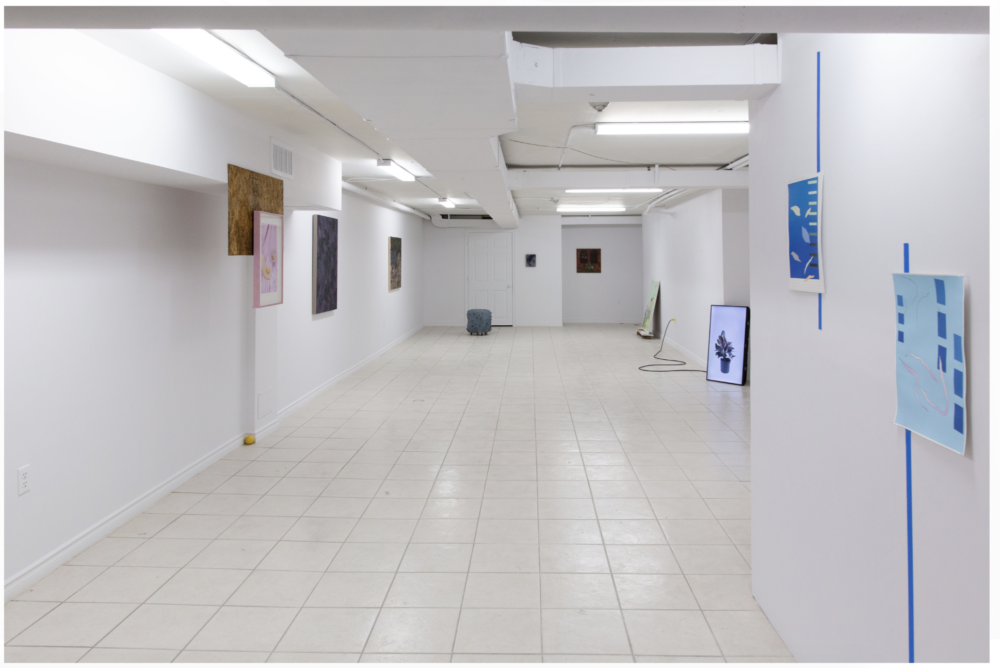In September 2020, the plumb christened their newly renovated gallery space in Toronto’s St. Clair West neighbourhood with exhibition Pits, Seeds. Showcasing work by their fifteen founders Pits, Seeds was the first of a whopping fourteen public-facing projects the plumb has mounted in less than two years.
As member Amanda Boulos put it, “This past year and a half has been to get the word out, and we’re doing that with large group shows, bringing in and showing as many artists as possible”.
Their whirlwind schedule, extensive network, and gallery space have enabled the plumb to quickly rise in prominence. Just one year into operation, they participated in Toronto’s first Gallery Weekend, Art Toronto 2021 and were interviewed by Art Gallery of Ontario curator Kathleen McLean for the digital talk series “Art in the Spotlight”. “It’s been this kind of fifteen-person relay race in response to Covid,” says Callum Schuster, another collective member. “We wouldn’t have done this if it wasn’t for all the momentum into our art practices the pandemic allowed for, because everything got cancelled”.
We sat down to a Zoom conversation with eight of the plumb’s fifteen founders: curator Laura Carusi; writer John Nyman; and artists Amanda Boulos, Daniel Griffin Hunt, Nadine Maher, Claudia Rick, Miles Rufelds, and Callum Schuster. We spoke about how they began, what they hope to contribute to the arts community, and their feelings on Toronto.
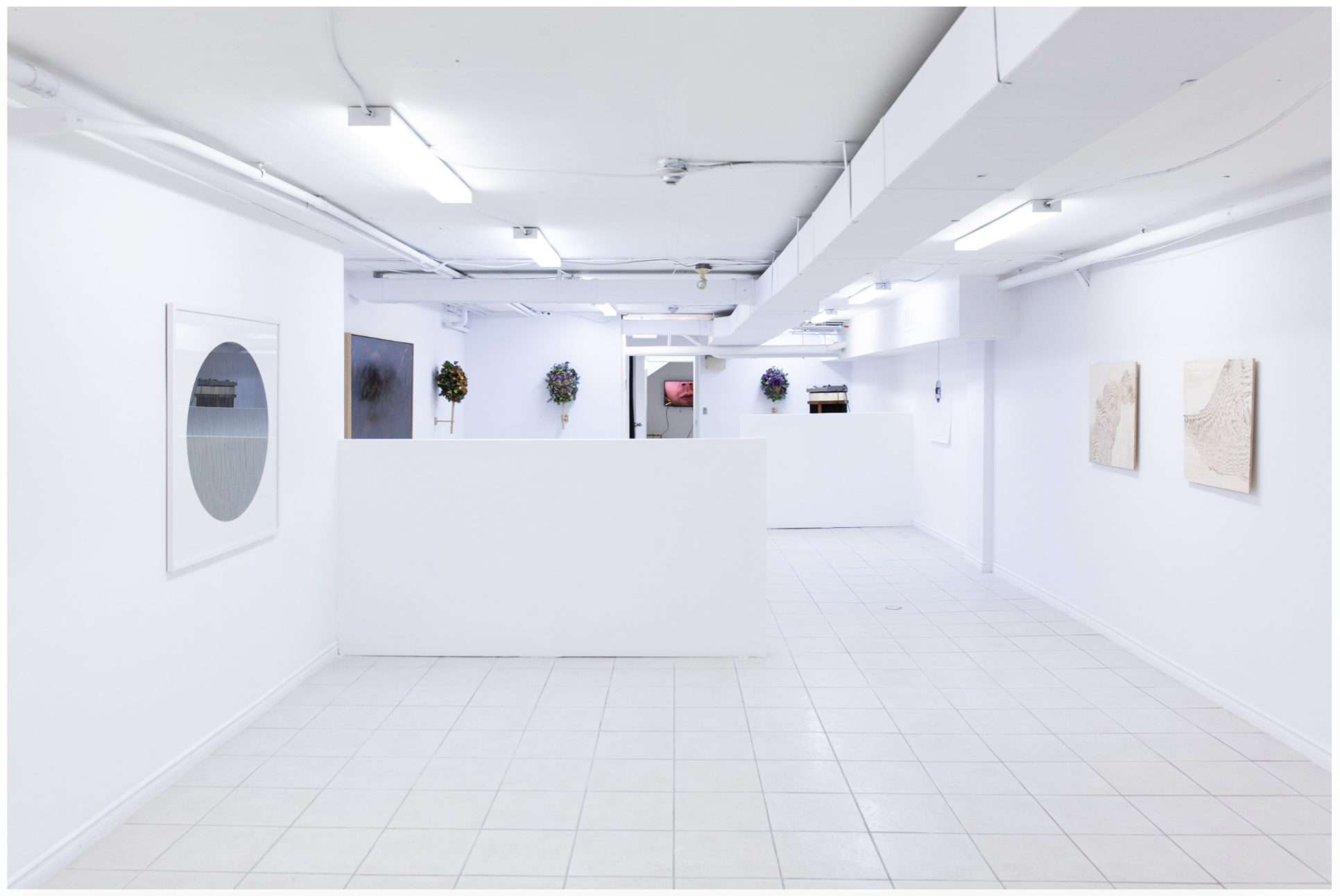
Ciar O’Mahony- when did the plumb form?
Daniel Griffin Hunt – Around June of 2020, and it happened really quickly. In under a month we all came together, took the space over, started renovating things, found a name…
Miles Rufelds- We were opening the doors to the space after two months. After [Daniel] and Emma [Welch, another plumb member] found the space listing, got us all together, and signed the lease… That couldn’t have been more than a couple of weeks.
DGH- There was a point where I was the only person who had seen it and there was this terrible video I made with a busted phone that I sent out… But everyone just said, “Alright let’s do it”… It was this big initial moment of trust.
John Nyman- I remember there was definitely a vibe of, “Are we really going to do this over a Zoom call? We can’t get together and meet each other?” A lot of people were strangers, and it was early in the pandemic, most of us hadn’t done a million things over Zoom yet… But there was a lot of faith.
Amanda Boulos- We also knew a space was needed in Toronto. And because there are so many of us, which I think was Daniel’s idea, to have so many members pitch in a small amount of money, it was easy to say yes. It was like, “Yeah take my money, open the space”.
DGH- I use the analogy of stone soup to explain the plumb. As artists in Toronto, we don’t have a lot of resources. The space is the stone and all our different skills are the food… And it’s kind of become this big soup that can feed everyone.
CO- What does the plumb collective do?
AB- We hope that we do a bunch of things. And not be defined by one… two… even three things. Maybe fifteen things [laughter]. We have all these different spaces at the gallery: the lightbox project, the plumb bar project, two big rooms and unique nooks which allow anything from small projects to big installations. And the online space where we’ve done film screenings and fundraisers.
Callum Schuster- It’s a Swiss army knife gallery in that way. And we really explore all those spaces because we fund ourselves; we don’t have to sell anything.
JN- We came together in the context of the pandemic. A big part of what we do as an art space is navigate that pandemic environment and respond to people’s changing interests.
Laura Carusi- We hope to do more programming, and had big conversations early on about what we want to do in addition to exhibitions. But so far that aspect has been limited by cascading lockdowns.
CS- Yeah, one thing that brought me closer to other plumb members early on were ideas about talks, potlucks and events that were about expanding outreach to the art community.
LC- It would also be great to engage with the surrounding community more directly. When my family first moved to Canada [St. Clair West] was their neighborhood. For me it’s been nice to be there again and connect with my own history, even if I still haven’t got Nonna to visit [laughter].
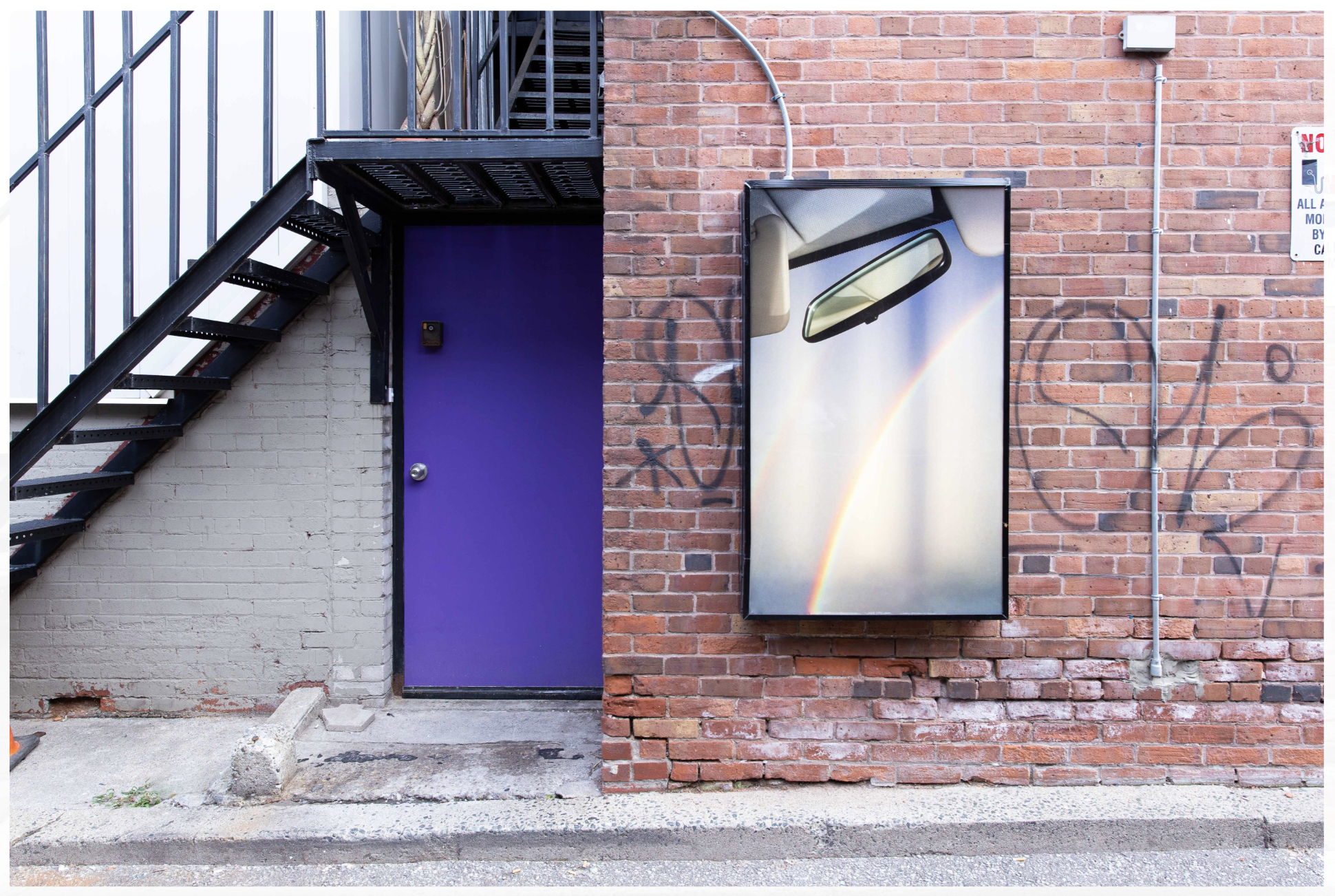
CO- Can you speak more about St. Clair West? Does it impact the work you’re doing?
CS- I love St. Clair West. I grew up around there and those alleys are where I learned to graffiti. Also our neighbors, Mexican restaurant Hey Wey, gave us a cake as a welcome.
LC- The neighbors I’ve spoken to are happy we’re there. The light box in particular [located outside the gallery space] has been a great way to engage with them.
Claudia Rick- We’re not close to other galleries, but we are near transit!
DGH- There’s a bus stop right outside, and a streetcar. Which is funny.. Topographically we look far from other galleries but we are actually very accessible by public transit…
LC- Unfortunately though we’re not accessible to those who can’t get down stairs, being a basement space. That’s something we’re conscious of, and the extensive exhibition documentation on the website has been our attempt to address that issue.
MR- In our early days there was a lot of discussion about having programs take place in nearby community centers and other spaces that weren’t the gallery, but like the art events we wanted to do they’ve had to be scrapped for now. Going forward we want to do them.
Nadine Maher- When I’m sitting in the gallery, the question I ask everyone who comes in is, “Have you been here before?” and the answer is almost always “no”. Usually they’ve seen us online and have finally made it in, but it’s clear we’re reaching a lot of people beyond the physical gallery.
CO- What are your feelings on the broader Toronto arts scene? Growing up, I watched artists come and go from Toronto all the time looking for bigger markets and opportunities, especially to the US, and found that really discouraging. How does it feel for you all to have committed to Toronto? Do you have a sense of its artistic character?
LC- I’ve worked in various gallery contexts around Toronto and Ontario. Commercial, public, municipal, the AGO etc. No matter where I was, the environment felt very insular, and I’ve felt at times that artists in the city weren’t being represented very well at all. The plumb is distinct because we provide a platform for artists who aren’t showing in those spaces, and who maybe don’t want to. We complete a picture in that way, of who’s making art in Toronto.
JN- Talking about insularity in arts institutions, what accompanies that is this cosmopolitan identity that comes from a specifically global contemporary art culture, which is homogenizing. I feel like when we all get together, I see a bit of local Toronto-ness show through… It’s hard because Toronto’s identity is impossible to define, being a diverse city. But the plumb has this ability to establish a kind of local identity which is distinct from global contemporary art, and even from “Canadian” art; it’s interesting to see that start happening.
AB- I’ve seen a lot of artists come and go too, especially during the pandemic. Fifty percent of my artistic network has left since it started. That’s part of the reason I said yes to the plumb. It was an opportunity to intimately meet fourteen people, it’s hard to say no to a community. Having the plumb space to go to, and people to see, even just once in a while, gives me a reason to stay in Toronto.
DGH- Yeah, in Toronto there’s this sense of brain drain; if an artist gets big enough or can afford it, they move to New York or Berlin… We wanted the collective to be a support structure for Toronto artists and… both uplift the scene and also be uplifted by it.
It’s not totally altruistic. Being part of the plumb allows us to shape the narrative of what’s happening right now. We’re making the history we want to see.
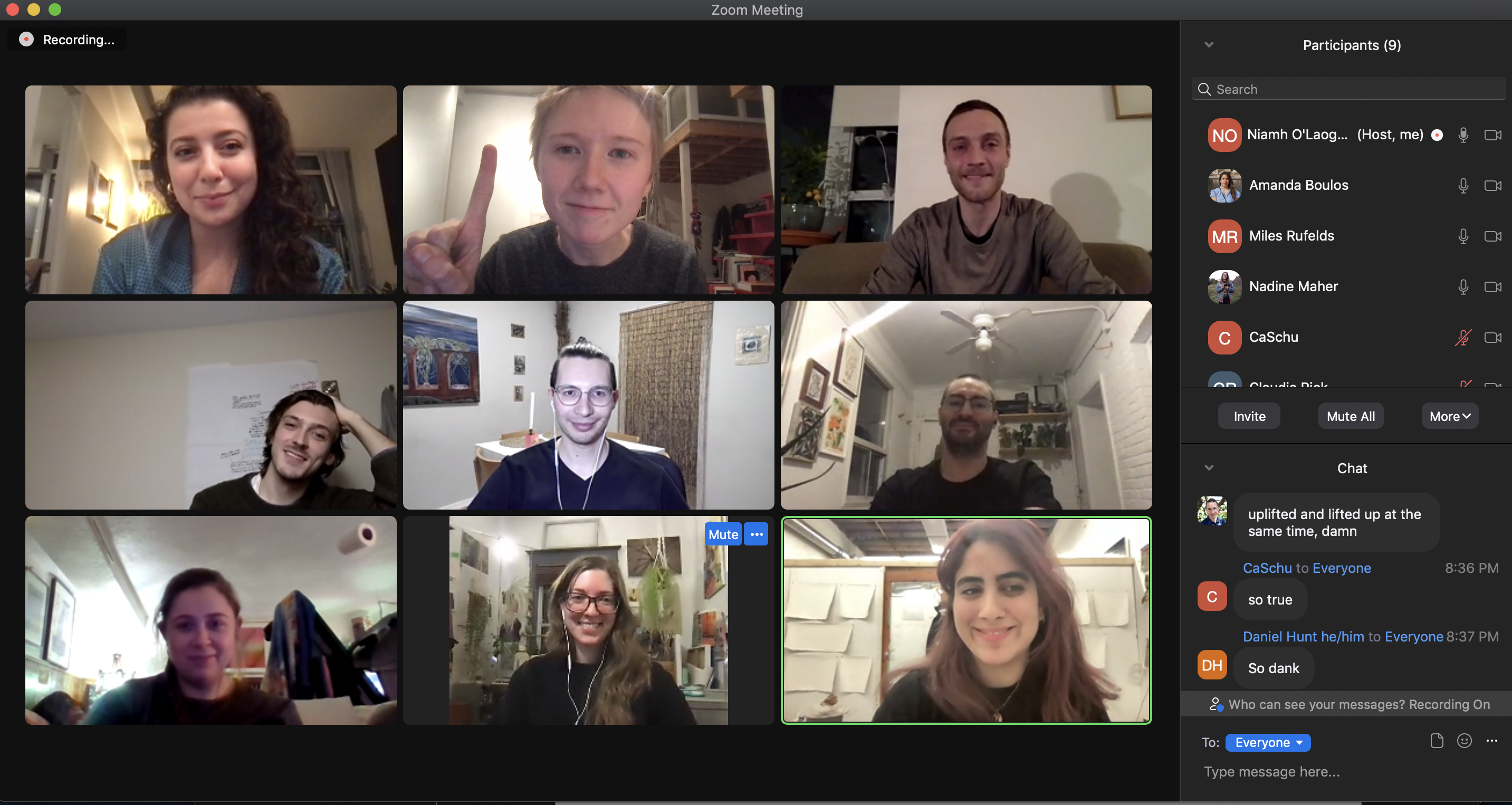
CO- Talking about uplifting the scene, members have said they hope the plumb can be an example to others wanting to start their own space or collective. Has anyone approached the plumb asking for advice? And would you ever consider doing programs explicitly intended to share your skills/perspectives with people who want to do that?
MR- I don’t think we should put sage caps on or anything, but there are simple things I’ve learned that aren’t necessarily intuitive if you’re trying to build an organization from the ground up. Assemble a group of people who have diverse resources in terms of tools and technology. Get people who know how to build things, write things, publicize things. If you’re starting a space and missing one of those key elements, it’ll be harder for you.
One thing we really stumbled into is we have all our bases covered, and that actually surprises me most about the plumb. We’re all tripping over each other trying to run the same space, but it works. It sounds unnavigable, but having fifteen members allowed us to get off the ground and keep momentum. Anyone can do that.
DGH- Yes, anyone can do it, and we want to be templative. This is a model that works and is affordable. I can’t speak to everyone in the plumb’s personal finances but I know a lot of us were on CERB [the Canada Emergency Response Benefit, which was available during the first year of the pandemic] and still made it work money-wise. If you can make it work then, it’s certainly possible if people have ‘real’ jobs.
AB- I also think people are more just looking for enthusiasm, which becomes permission to do stuff like start your own collective. Seeing the model is more important than any lesson we could teach.
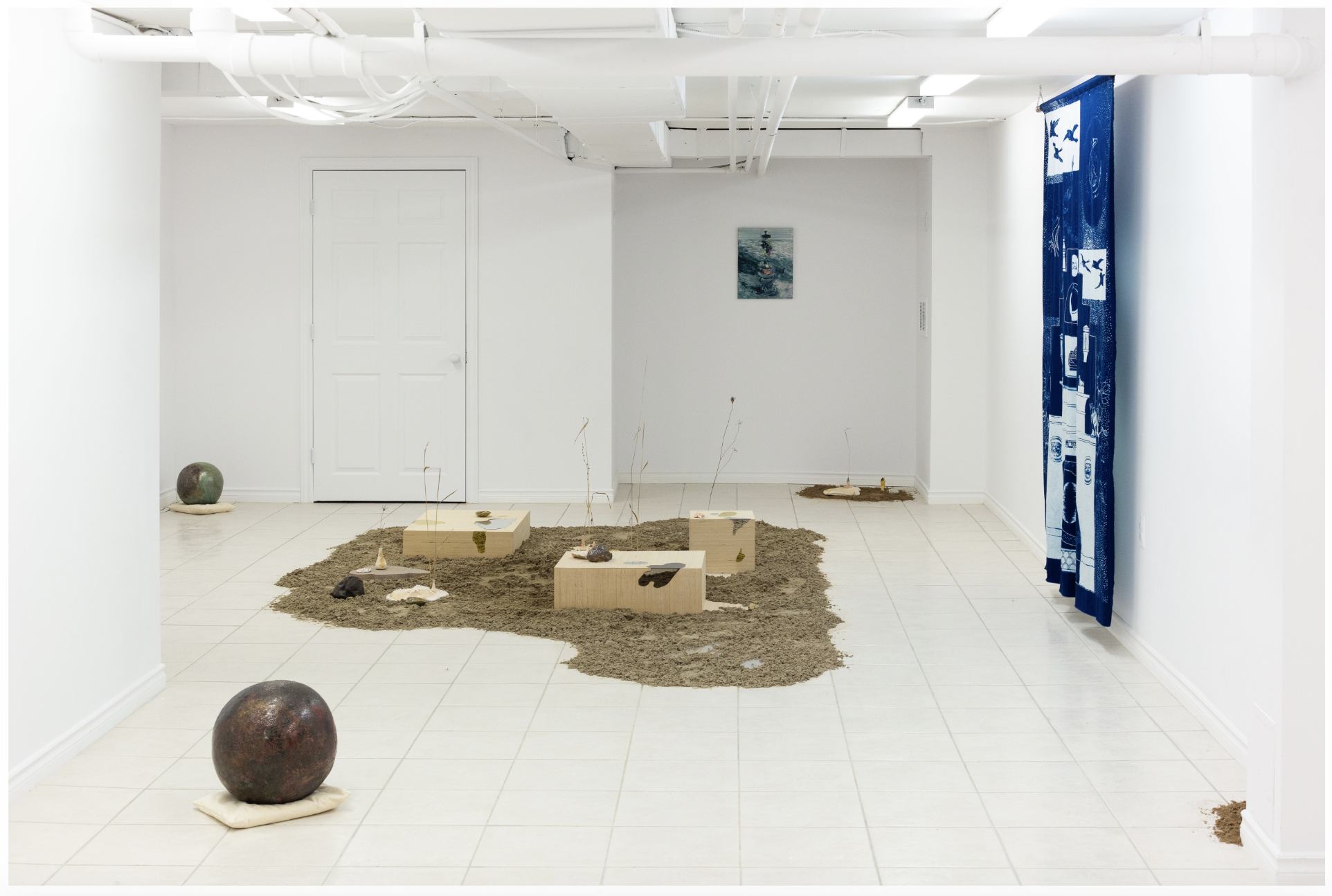
CO- There are many approaches to working collectively in the arts — what does the word “collective” mean to the plumb? What is your collective working method?
MR- Because we had to assemble in such haste [to make a deposit on the space] and brought together fifteen people who didn’t otherwise have a reason to be together… the plumb has to be a decentralized collective. Over the years there’s been a strengthening of bonds, but we have to be many things to many people, I don’t know if something more intentional is desirable.
AB- I think the plumb is a bit of a superficial identity in that it feels like an empty box… It’s space. We all pay into the space, we share power, and we let other people in with their projects.
JN- A lot of what makes us a collective is our financial attachment to the space. There was no specific model or structure we wanted at the beginning, the model was that we needed to pay the rent. I think of it as a house party, we have no real reason to all be together, but we want to stay to see where it goes.
AB- We also come from a very similar art community with similar educational backgrounds.
JN- Yeah, we don’t want to give the impression that we’re a bunch of random strangers. Even if we didn’t know each other before, we were at arm’s length. When we all met we recognized that we had a lot in common. That’s formed the basis for us to work together. So what I mean is.. it‘s not like our connections come from nowhere, they just aren’t easy to formalize.
DGH- They’re rhizomatic, like asking a group of people, “how did you become friends?”
CO- What are you all most proud of accomplishing since beginning the plumb?
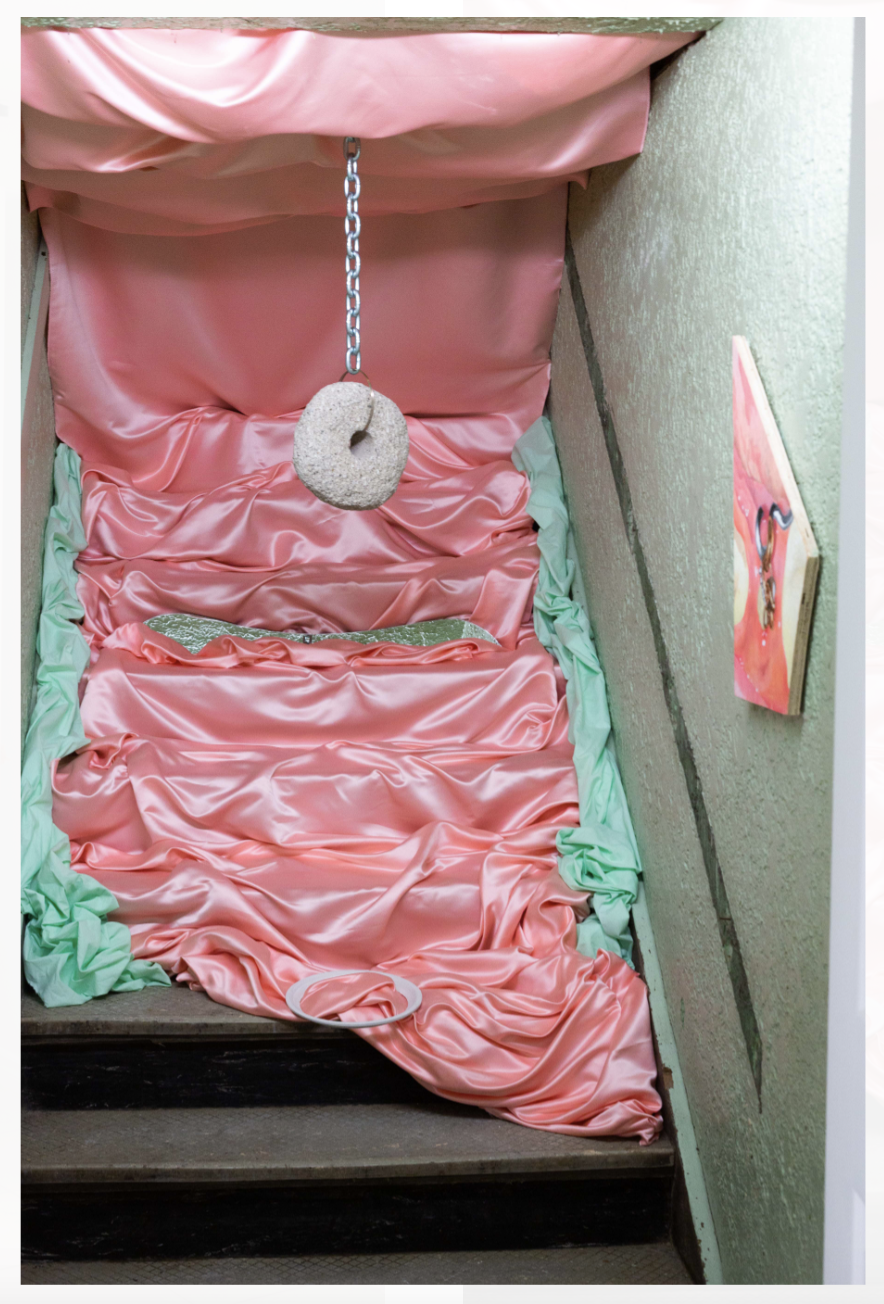
LC- A conversation I had with Kim [Kozzi] of the FASTWÜRMS collective [included in the plumb’s exhibition Moonshow]. She said it was inspiring to work with a young group of artists. I had asked them to participate in that show and didn’t think they would say yes, so having that unsolicited response afterwards was one of my proudest moments.
CS- I do art for myself as a kind of therapy, and last year I lost a friend and I knew other artists who had lost people too, So I curated a show [Solace] about these hard-to-talk-about experiences… and experienced that therapy aspect outwardly with a group which I hadn’t done before.
MR- It’s important to me to create spaces in contemporary art which reach out to people without master’s degrees.. And the plumb does that; like Nadine said, new people always come in who’ve seen us online or have a cousin or roommate or something in a show. Maybe they don’t have a connection to artistic culture, but they come in, and I find that inspiring.
JN-I don’t have a strong background in art, coming from a critical writing practice. Over time I’ve come closer to the visual arts community and the plumb has been huge for that. It gave me the confidence to take my creative writing practice and turn it into other disciplines, and that’s really meaningful to me.
DGH- It’s three moments. 1) When we all first got together, we sat on the floor in the space. It was awkward, but the chemistry was right. 2) When we had our first opening reception.. There were so many people. It felt like we made the right choice starting a space like this, together. 3) Our second fundraiser. The people and the turnout were so incredible.
CR- Someone said to me after an exhibition that they appreciated seeing art in real life. That they hadn’t been able to for so long. It made me feel like at the very least we’ve shown art in real life, and that’s worth it.
NM- Our recent fundraiser. It physically manifested so much hard work. So many people we didn’t know came. I was thinking, “Who are you? How did you get here?”
AB- Painting our space white!
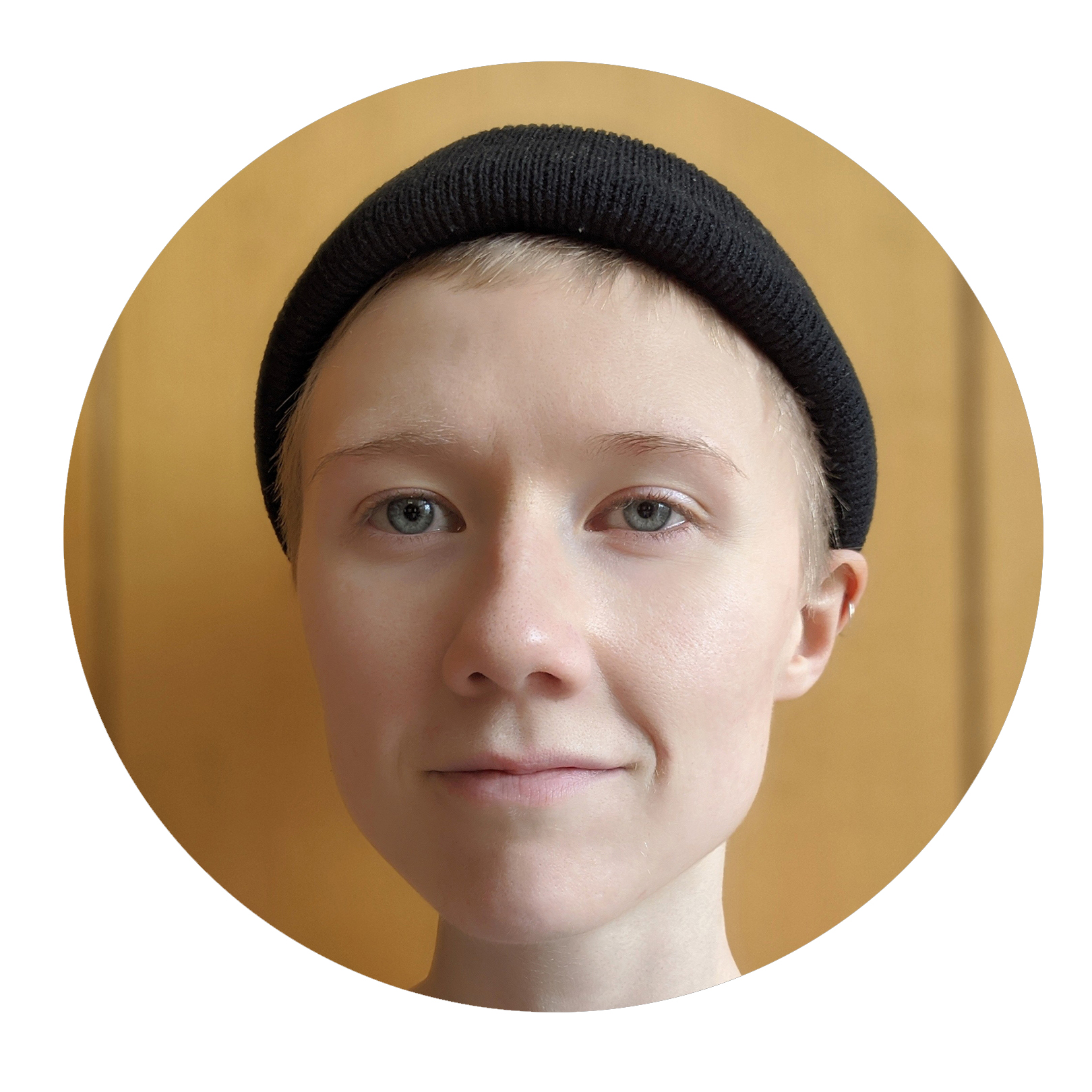 Ciar O’Mahony is an artist and curator based in Toronto. They are interested in the impact of collective working structures on artist communities.
Ciar O’Mahony is an artist and curator based in Toronto. They are interested in the impact of collective working structures on artist communities.

